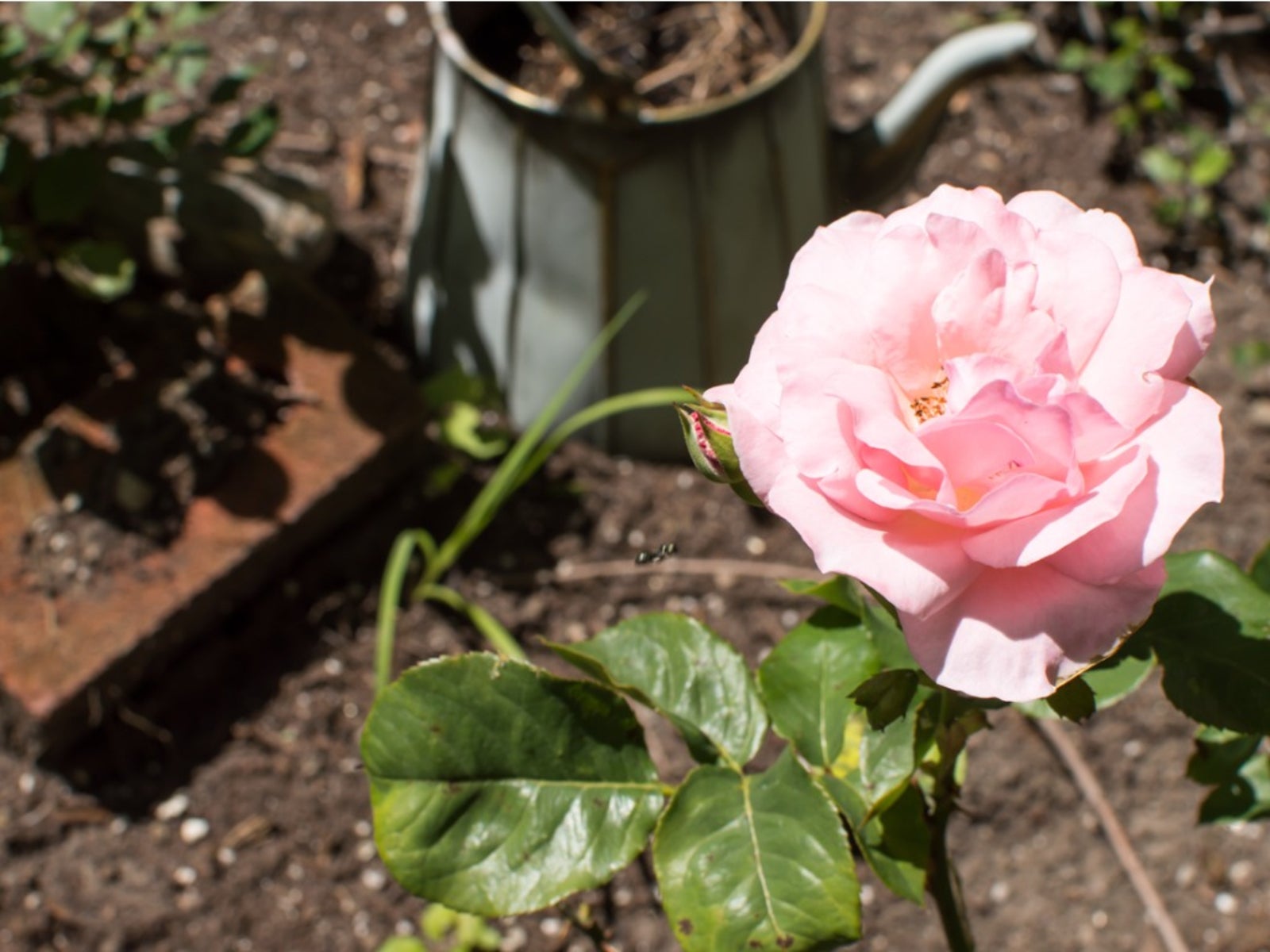Rose Soil Preparation: Tips For Building Rose Garden Soil


When one brings up the topic of soil for roses, there are some definite concerns with the makeup of the soil that make them their best for growing rose bushes and having them perform well.
Rose Soil pH
We know that the soil pH is optimum at 6.5 on the pH scale (pH range 5.5-7.0). Sometimes the rose soil pH may be either too acidic or too alkaline, so what do we do to effect the desired change in the pH? To make the soil less acidic, the common practice is to add some form of lime. Typically, ground agricultural limestone is used and the finer the particles the more rapidly it becomes effective. The amount of ground limestone to be used varies with the current soil makeup. Soils higher in clay will typically require more of the lime additive than those lower in clay. To lower the pH level, aluminum sulfate and sulfur are typically used. The aluminum sulfate will quickly change the pH of the soil for roses where sulfur will take longer, as it requires the aid of the soil bacteria to make the change. For any pH adjustment, apply the additives in small amounts and test the pH at least a couple of times before adding any more. Amendments to the soil will have some effect on the overall soil pH. We need to keep this in mind and keep an eye on the pH level. If the rose bushes start to change in their performance or even have an overall change in natural foliage coloration or natural shine, it could very well be an out-of-balance soil pH problem.
Preparing Soil for Rose Bushes
After considering the soil pH, we need to look at the beneficial micro-organisms in the soil. We must keep them healthy in order for the proper breakdowns of the elements that provide the food for our rose bushes to take up. Healthy micro-organisms will crowd out pathogens (the disease making bad guys) in the soil by competitive exclusion. In the process of competitive exclusion, the beneficial micro-organisms reproduce themselves quicker than the bad ones and sometimes even feed upon them. Keeping the micro-organisms happy and healthy will usually involve adding organic materials/amendments to the soil. Some good amendments to use for rose soil preparation are:
- Alfalfa meal - Alfalfa meal is a good source of nitrogen and is nicely balanced with phosphorus and potassium, plus it contains Triacontanol, a growth regulator and stimulant.
- Kelp Meal - Kelp meal is a slow-release Potassium source providing over 70 chelated trace minerals, vitamins, amino acids, and growth promoting hormones.
- Compost - Compost is decomposed organic matter that increases microorganism activity and improves the overall quality of the soils.
These, along with some peat moss in them, are all wonderful soil building amendments. There are some great organic composts on the market in bagged form; just be sure to flip the bag over to read what all is actually in that compost. You can also make your own compost fairly easily these days with the compost maker kits at local garden centers. Roses prefer a rich loamy soil that drains well. They do not like to have their root systems in soggy wet soil, but cannot be allowed to dry out either. A nice, pliable, moist feel to the soil is what is desired. Nature has a way of telling the gardener when the soils are good. If you have been successful at building rose garden soil, the earthworms come into the soil and are easily found there. The earthworms help aerate the soil, thus keeping the oxygen flowing through it and keeping the entire biological process in good balance, working like a well-oiled machine so to speak. The worms further enrich the soil with their castings (a nice name for their poo). It is like getting free fertilizer for your roses and who does not like that! Basically, a good soil makeup for roses is said to be: one-third clay, one-third coarse sand, and one-third decomposed organic matter. When mixed together, these will give you the right soil blend for providing the best of soil homes for your rose bush's root systems. Once you have felt the texture of this properly blended soil, it should go through your hands and fingers, and you will easily recognize it from then on.
Sign up for the Gardening Know How newsletter today and receive a free copy of our e-book "How to Grow Delicious Tomatoes".

Stan V. Griep contributed to Gardening Know How for many years and has been a Colorado Native Rosarian for over four decades. He is an American Rose Society Certified Consulting Master Rosarian in the Rocky Mountain District, and a member of the Denver Rose Society, the Loveland Rose Society, and the American Rose Society. He is Gardening Know How's in-house expert on all things roses.